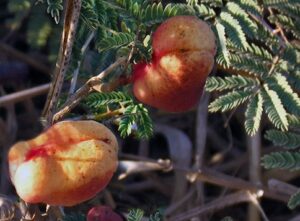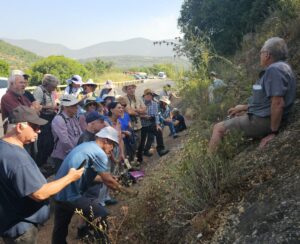The genus Stellaria in Israel – one species or three?
Erga Aloni, Kalanit editorial board. eragaloni@netvision.net.il
Keywords: cross-pollination, self-pollination, species, Stellaria cupaniana, Stellaria pallida, Stellaria media, papillae, protandry, Caryophyllaceae, stigma, garden plants, ruderal plants, cleistogamy, morphological variance, subspecies, flowering and pollination
There are three given species of Stellaria in Israel: the Common Chickweed (Stellaria media), the Lesser Chickweed (Stellaria pallida), and Stellaria cupaniana . The genus is known for high variance and the plasticity of the plant's and flowers' characteristics, and there is no consensus in the literature regarding the systemic status of the species. In the course of observations carried out in three types of habitat in the Sharon region, we examined the vegetative characteristics of the plants, the flower's features and reproduction systems, and the preference for type of habitat in items with a corolla, that are identified as Stellaria media and items lacking a corolla, that are identified as Stellaria pallida. In addition, observations were carried out of these features in Stellaria plants in several sites in the north, including items defined in Israel as Stellaria cupaniana. The results lead to the assumption that in Israel we are talking, in fact, of one species – Stellaria media, which presents a wide range of morphological and ecological variance.
Summaray of Kalanit study tour to the Southern Coastal Plain 15 & 16 February, 2017
Avi Shmida, the Department of Evolution, Systematics and Behavior, the Federmann Center for the Study of Rationality at the Hebrew University in Jerusalem, Givat Ram, and the Land of Israel Studies at the Kinneret College. avi.shmida@gmail.com
Gadi Pollak – Kalanit editorial board. gadpollak@gmail.com
Keywords: Iris palaestina, batha, sandy loam, sandy limestone, Coastal Plain, Senacio galucus, Senacio joppensis, sand plants, endemic plants, calciphobic plants, calciphilic plants, kurkar, hamra
During the study tour we observed the vegetation and flora of the sand dunes, kurkar (limestone hills) and hamra ) areas of the Southern Coastal Plain. In the Southern Coastal Plain there is an interesting combination between Mediterranean and desert vegetation and flora, that is dictated by the relatively young geological age of the infrastructures in the area, and the domination of sand as a main parent material of infrastructure types. Emphasis was placed on the geological history of the area, the manner in which the sandy loam and limestone soils were created, and the connection between plant communities and species of flora and the types of rock and soil, and the evolutionary process that influence the relatively high rate of endemic species.
The light asymmetry hypothesis, and the competitive exclusion of plants following fertilization: results from an experiment in the national park of Beit Guvrin.
Niv Demalach, The Hebrew University of Jerusalem. nivdemalach@gmail.com
Keywords: Graminae, annuals, nitrogen, species diversity, herbaceous plants, broad-leaved, Avena sterillis, Hordeum spontaneum, ecological adaptation
The addition of nitrogen to natural systems is one of the greatest threats to the diversity of species around the world. In a field experiment at Beit Guvrin the "Light Asymmetry Hypothesis", which is one of the common hypotheses that explains the competitive exclusion following the addition of fertilization, was tested. The experiment framework included light measurements at different heights, and manipulations of competitor removal for the quantification of the strength of the competition. The results of the experiment support the hypothesis, and demonstrate that asymmetry in the competition for light (the difference in light absorption between large and small plants) is the main factor for competitive exclusion, and the reduction in the richness of species following fertilization.
The note is based on the article:
DeMalach, N., Zaady, e. & Kadmon, R. "Light asymmetry explains the effect of nutrient enrichment on grasland diversity", Ecology Letters, 1:60-69 (2017). http://onlinelibrary.wiley.com/doi/10.1111/ele.12706/abstract
"Florula of Transjordan" and the Aaronsohn legacy
Uri Rosenberg agron@netvision.net.il
Keywords: Aaron Aaronson, Oppenheimer, wild wheet, Athlit, Transjordan Florula
Aaron Aaronson, who was termed "the first Israeli scientist" and "the pioneer of science in the country", was a polymath, a farmer, a scientist, an explorer, a politicians, and a spy, whose life ended suddenly, possibly even mysteriously, when he was only 43 years old. This article describes Aaronson's contribution to the botanical science, to agriculture, and to afforestation at the beginning of the previous century, and the fascinating tale is told of the research travels he made in the region, and how his scientific bequest was partially saved and published.











